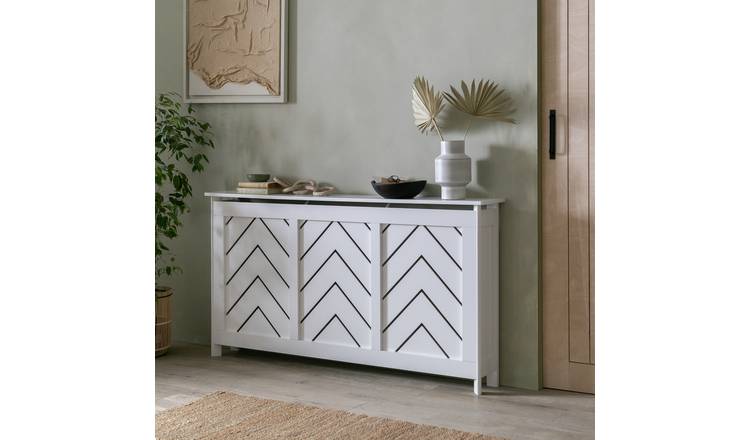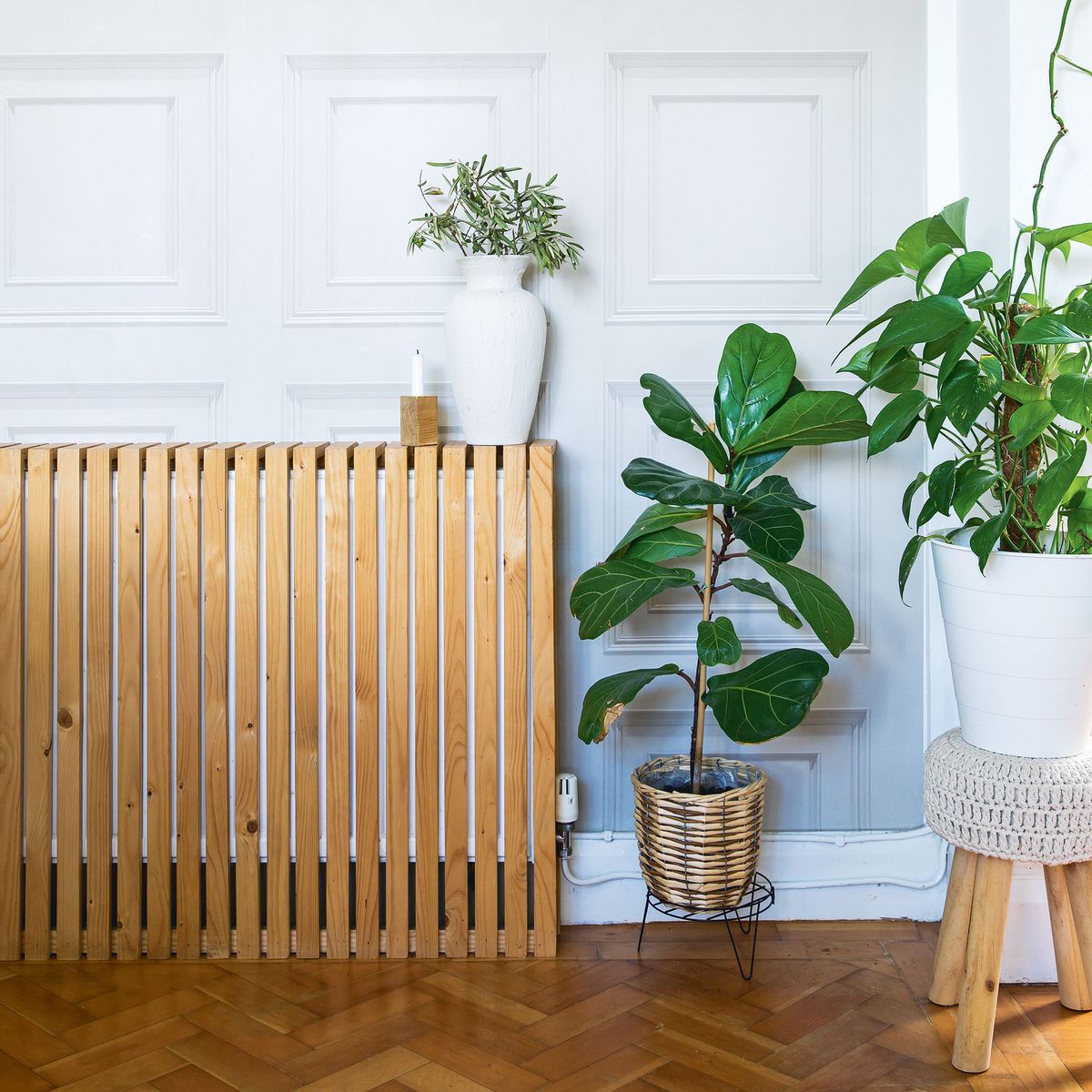Why Every Home Demands a Radiator Cover for Improved Safety and Style
Why Every Home Demands a Radiator Cover for Improved Safety and Style
Blog Article
Radiator Covers: Recognizing Products, Layouts, and Advantages
Radiator covers serve both functional and visual purposes within a home, supplying an array of products such as wood, metal, and MDF to suit numerous style choices. As styles evolveâEUR" from traditional to contemporaryâEUR" these covers not only improve the visual appeal of a space yet also add to safety and energy performance. Choosing the right radiator cover entails comprehending the subtleties of materials, designs, and their connected benefits. This expedition elevates important concerns concerning how these elements integrate right into your living setting and what factors to consider need to lead your selection procedure.
Sorts Of Products


Wood covers, commonly crafted from hardwoods such as oak or maple, offer a traditional, cozy appearance that complements traditional insides. Their toughness and capability to be discolored or repainted contribute to their versatility. Metal covers, usually made from steel or aluminum, are favored for their effectiveness and contemporary appearance, typically including streamlined lines that enhance contemporary rooms.
MDF, a produced wood product, is prominent for its cost-effectiveness and ease of customization. It can be repainted or finished to match existing decoration while providing a smooth surface area. Plastic covers, while much less common, are light-weight and immune to moisture, making them appropriate for moist settings.
Eventually, the selection of material for a radiator cover should straighten with the house owner's design preferences, useful needs, and the specific atmosphere where the cover will be set up. Each product offers a distinct character, making sure that there is a choice to match every preference and setup.
Popular Design Styles
Highlighting visual appeal, popular style styles for radiator covers mirror a variety of preferences and interior decoration patterns. Traditional designs frequently feature complex woodwork and ornate describing, making them ideal for vintage-inspired or traditional insides. These covers typically incorporate carved elements, providing a warm and welcoming feel to any room.
On the other hand, contemporary designs concentrate on minimal looks, defined by clean lines and downplayed style. Materials such as steel or smooth wood with a smooth coating are typically utilized, enabling these covers to blend flawlessly right into modern-day spaces. Industrial styles, on the other hand, accept raw materials like exposed metal and concrete, adding a vibrant statement to loft space or city settings.
For those looking for an unique touch, bespoke styles provide personalization options that deal with private preferences, enabling home owners to pick shades, patterns, and materials that complement their design. In addition, farmhouse-style covers incorporate rustic components, featuring troubled wood and easy forms that stimulate a comfortable, country charm.
Advantages of Radiator Covers
Radiator covers not just boost the visual allure of an area yet additionally supply several practical benefits that make them a worthwhile enhancement to any type of home. like it One of the main benefits is safety and security, particularly in homes with youngsters or pets. Covers minimize the risk of burns from warm radiator surfaces, guaranteeing a much safer atmosphere.
Furthermore, radiator covers can improve energy efficiency. By routing warmth right into the room instead of allowing it to run away, they help keep a consistent temperature level, decreasing home heating costs in time. This is especially useful in older homes where radiator systems might be less efficient.
Another noteworthy benefit is noise decrease. Radiators can often generate undesirable noises during operation, and covers can help stifle these noises, adding to a more calm space. In addition, radiator covers can be functional, offering extra storage or display room, therefore making the most of the utility of often-overlooked locations.
Last but not least, they can safeguard radiators from dust and debris, which can prevent efficiency and boost upkeep needs. With these combined advantages, radiator covers become a functional solution for boosting both the functionality and style of any home atmosphere.
Installation Factors To Consider
Installing radiator covers needs careful factor to consider to read more guarantee both functionality and safety (Radiator cover). Initially, analyze the measurements of your radiator and the surrounding space to make sure a proper fit. Exact measurements are crucial; an uncomfortable cover can block warmth flow or develop safety and security risks
Next, evaluate the material of the cover. While wood uses visual allure, steel choices may give much better toughness and warmth resistance. Think about the weight of the cover also; larger covers might need additional support or reinforcements to stay clear of sagging or damages over time.
Air flow is another crucial facet. Covers have to include adequate airflow to stop getting too hot and keep efficient heating. Seek designs with slats or perforations that permit warmth to circulate without blockage.
In addition, make certain that the cover is safely installed to avoid accidents, specifically in homes with pets or kids. Radiator cover. It's advisable to adhere to the manufacturer's installment guidelines carefully and, if essential, seek advice from a professional for intricate installments
Upkeep and Treatment Tips
Correct upkeep of radiator covers is essential for ensuring their durability and optimum efficiency. For repainted or wood covers, take into consideration an ideal gloss or protective layer to maintain their appearance.
Check the covers periodically for indicators of wear or damages, such as fractures or peeling off paint. Attending to these issues immediately can stop additional degeneration. Guarantee that the covers are safely secured and look for any kind of loose screws or fittings, as resonances from the radiator can loosen them over time.
In colder months, avoid putting hefty things explanation or ornamental items in addition to the radiator covers, as this can impede heat distribution and create unnecessary stress and anxiety to the structure. Consider seasonal upkeep by getting rid of the covers for detailed cleaning and assessment throughout warmer months when the home heating system is inactive. Embracing these straightforward care tips will improve the performance and aesthetic appeal of your radiator covers, guaranteeing they offer their purpose properly for several years to find.

Conclusion
In recap, radiator covers serve as useful and visual improvements to domestic areas. Mindful factor to consider of setup and maintenance further guarantees the durability and efficiency of radiator covers in any type of home atmosphere.
Radiator covers serve both aesthetic and practical purposes within a home, using a range of products such as hardwood, mdf, and steel to match various style choices. Picking the ideal radiator cover involves recognizing the nuances of products, layouts, and their associated advantages.Emphasizing visual allure, preferred layout styles for radiator covers mirror a variety of preferences and indoor layout fads.Radiator covers not only enhance the aesthetic appeal of a room yet additionally use several useful advantages that make them a beneficial addition to any type of home. Think about the weight of the cover as well; much heavier covers may require extra support or reinforcements to avoid sagging or damage over time.
Report this page